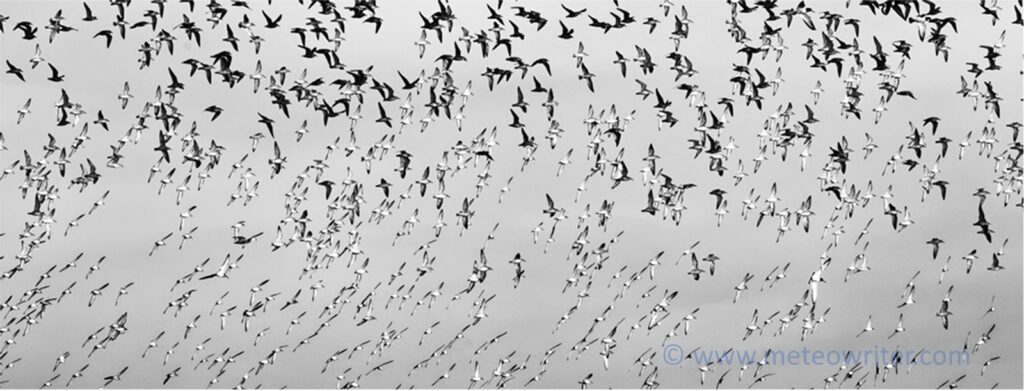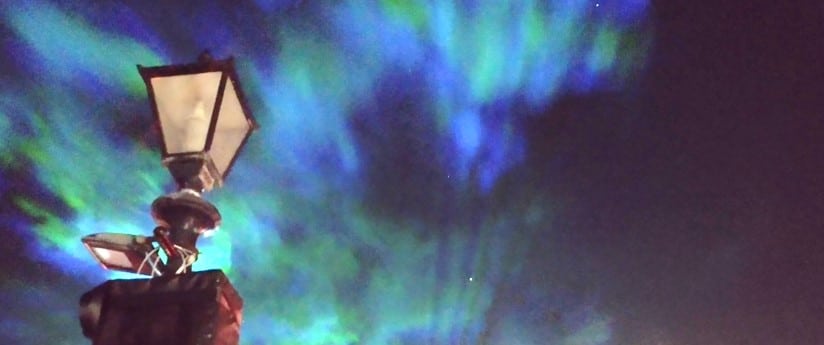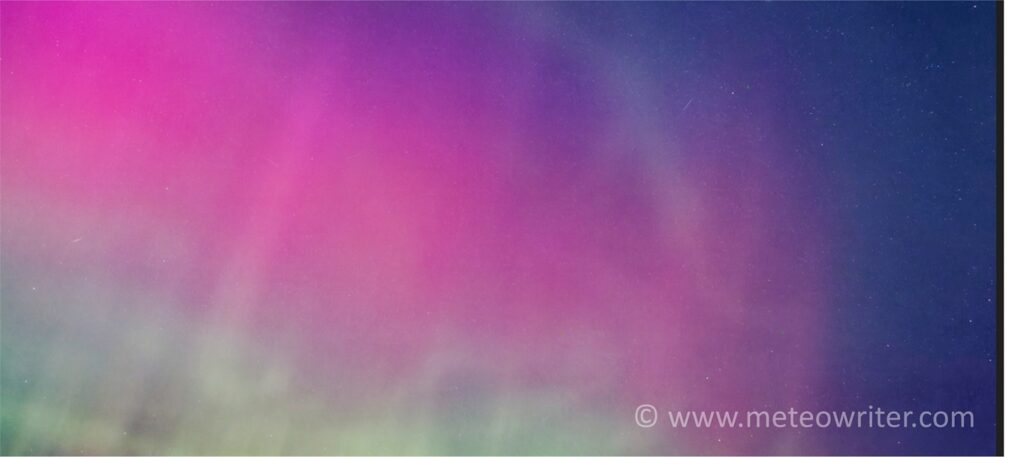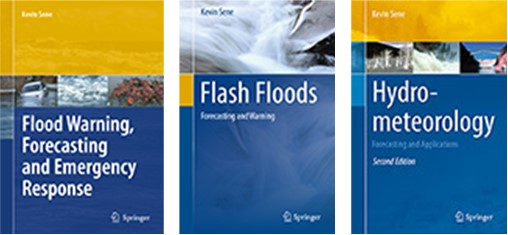Welcome to the April issue of Nature’s tidings, as spring starts to reveal some of its finest natural spectacles, with news of possible cherry blossom, aurora, meteors and waterbird murmurations sightings in the weeks ahead.
Starting with the easiest to spot, tree blossom is already starting to appear around our way and is no doubt further ahead to the south.
Further afield, cherry blossom (sakura) has a particular meaning in Japan, with the annual hanami flower-viewing festival signifying the ephemeral nature of life and a time for celebration. First flowering began a couple of weeks ago in the south of the country and the Japan Weather Association’s weekly blossom forecasts predict that blooms will start to appear in the north around mid-April, which is slightly earlier than usual. Predictions are based on air temperature records since the previous autumn and forecasts for the weeks ahead along with historical first bloom records from a sample of cherry trees around the country.
This post first appeared in my free monthly newsletter, Nature’s tidings, which gives insights into some of nature’s most impressive weather, wildlife, space, coastal and tidal phenomena. Just sign up at the following link if you’d like to receive posts like this as soon as they are published (free from spam):
Outside Japan, cities with long established cherry blossom festivals include Copenhagen, Stockholm, San Francisco and Washington DC. In the UK, popular viewing spots include Kew Gardens in London and the Meadows in Edinburgh and the National Trust website includes many other suggestions. Looking back at past photos, those in our local park should reach their best towards the end of this month.

April cherry blossom at the Meadows in a previous year
Dunlin and knot murmurations are another spectacle worth looking out for in spring. In a similar way to starling murmurations, under the best conditions tens of thousands of birds trace shapes in the sky, but it’s usually the rising tide or a predator that startles them into flight rather than the fading light. Both species have light undersurfaces and dark tops to their wings leading to amazing patterns as they twist and turn together, with colours and shades rippling through the flock.
In the UK, perhaps the best place for a sighting is at the RSPB’s Snettisham reserve in Norfolk so if you happen to be nearby that’s well worth a visit. However, be sure to download their Snettisham Spectacular leaflet before making a trip as viewings are only likely on a handful of days this month before a gap until August. Sightings are also possible at some other reserves but require a bit more research to find out where and when is best to go; check reserve websites, blog posts and social media posts for the latest news. And if you can’t make a visit, there’s a great video online that gives a good idea of what happens called ‘Dance of the Dunlins’ filmed in Washington State’s Skagit Valley.

Knot at RSPB Snettisham showing the two tone effect that leads to mesmerising patterns as they twist and turn in the sky
At the other extreme, the Northern Lights are one of the most difficult phenomena to spot, but unusually the past fortnight has seen displays on most nights following a burst of solar activity. Due to low cloud though, the closest I’ve got was at an imaginative art installation called Borealis in Liverpool. Designed by artist Dan Archer, this has been displayed in about 40 cities and uses lasers to project coloured beams above the crowd, with theatrical smoke to provide a reflection. With a light breeze swirling around, it captured the rapidly changing nature of the lights well, with the reds, greens and blues typical of the best aurora displays.

Borealis at Albert Dock, Liverpool, March 2025
Normally, with shorter nights the chances of a sighting drop rapidly as spring progresses, but having said that last May saw one of the best displays in years, visible down to southern England, Germany, Florida and California. Activity is often said to be linked to the 11 year solar cycle which has only recently passed its peak, hopefully leading to more good sightings in the months ahead.
If you do fancy trying to spot them, look for a dark spot with a clear view north and sign up to one or (ideally) more alerting sites, such as spaceweather.com and/or for UK viewers the Glendale app and/or AuroraWatch UK. Each has its own strengths and to gain insights into what other people are actually seeing it’s also worth subscribing to or following a selection of social media sites relevant to your location; searching for sites with the word ‘aurora’ in them is a good start. Time your visits around the full moon too which, although good to see, once risen will make spotting the lights more challenging for the next week or two.

The Northern Lights on New Year’s Day 2025 showing the beautiful range of colours sometimes on display
Continuing with the space theme, the Lyrid meteor shower will briefly reach a peak as the Earth passes through debris left by a long-departed comet. This is one I’ve not seen before and is said to be fairly modest in frequency, typically generating 10-20 meteors per hour but with the rare prospect of short bursts of about a 100 per hour, or more than one a minute. Expect fast moving bright streaks with only rare sightings of the longer lasting paths visible in some other meteor showers.
Many websites and apps are available to help decide when to go and where to look and if it’s cloudy on the night there might also be a chance shortly before or after the peak, which will occur on around 22 April. For example, the excellent timeanddate.com gives a visual guide to the direction (bearing) and angle above the horizon (altitude) by time of night at your location. However, if you are just starting out meteor watching there will be easier examples later in the year, weather permitting.
So, good luck if you try to make a sighting – natural phenomena aren’t always predictable or easy to spot which makes seeing them even more satisfying when it happens!
Further reading
Spectacular Britain: A spotter’s guide to the UK’s most amazing natural phenomena, Bloomsbury, for scientific insights and more tips on spotting the Northern Lights, meteor showers, tree blossoms and murmurations.
The Quadrantids Meteor Shower for some safety tips when watching meteor showers and a slightly tongue-in-cheek account about what not to do when trying.
The Elusive Northern Lights for more insights into why aurora occur and one of my own attempts to spot them.
Dance of the dunlins for more insights into why waterbird murmurations occur and where to see them in the UK.
Spectacular weather forecasts with some tips on which weather forecasts to use when going out to see natural spectacles.

